All information you need to know about OET Reading test
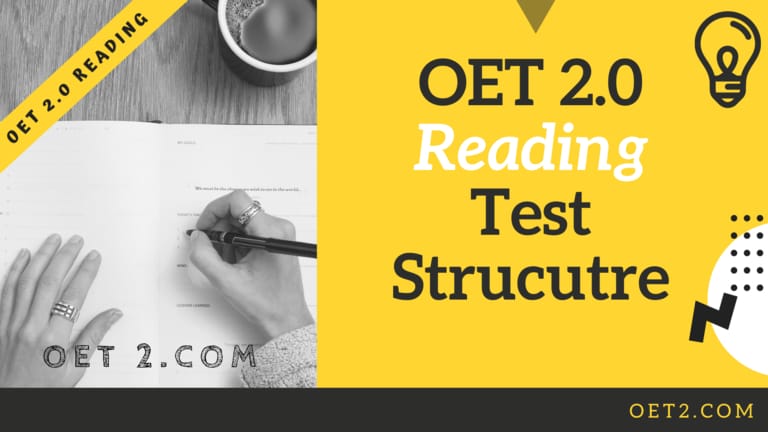

All information you need to know about OET 2.0 Reading test
In this article, OET2 will till you all information you need to know about OET reading test and how to get a high score.
OET 2.0 Reading test time
The Reading sub-test contains 42 questions and consists of three parts. All three parts take a total of 60 minutes:
- Part A, 15 minutes
- Part B, C 45 minutes
OET Reading test structure
The Reading Sub-test has three parts to be completed in 60 minutes: Part A, Part B and Part C. In comparison to the original version of the OET, the current version of the Reading Sub-test OET 2.0 (introduced in 2018) has a few differences:
- More texts are used (12 rather than 6)
- There is a broader range of text types
- Texts are more relevant to the healthcare workplace
- Questions will test a broader range of reading skills, such as reading for:
– General ideas (the “gist” of a text)
– Opinion
– Attitude
The structure of each part of the OET 2.0 Reading Sub-test is outlined below.
1. Part A
Part A requires candidates to skim and scan 4 short, health-related texts (labelled A, B, C and D) and answer 20 questions relating to the texts.
The texts use a vocabulary and structure that can be understood by all health professions.
Texts All of the texts can be found in the workplace of a healthcare professional. This means that the texts do not include journal abstracts, which were common in Part A of the previous version of the OET.
At least one of the texts contains visual or numerical information (e.g. a graph, table or flow chart).
Examples of texts that may be used are:
- Diagnostic tools or algorithms
- Advice to be given to patients
- Dosage options for a medication
- Treatment guidelines
Questions of part A reading test
The questions for Part A will be grouped into 3 or 4 sets (most often, there will be 3 sets). Each set will have 6-7 questions.
The questions will be easiest in the first set and get harder as candidates move through each set.
All of the questions must be completed within a 15 minute time limit.
The question types used are:
1. Matching questions (always used for the 1st set)
- These will require candidates to identify which text features certain types of information.
- E.g. “Which text contains information about treating melanoma?”
- The candidate is required to write their answer as “A”, “B”, “C” or “D”, according to the text that the information is found in.
- This set tests skimming and scanning for relevant information.
- The purpose of this set is to orient candidates to the general content of each text.
2. Short answer questions (used for the next 2 or 3 sets)
- These will require candidates to find specific information within the texts.
- E.g. “What is the first-line treatment recommended for epilepsy?”
- The answers will always be taken directly from the texts, in the same word form. This means that candidates do not need to change the grammar or spelling of the answer in order to get it correct.
- Each answer will be approximately 2 or 3 words long, although there is no set limit.
3. Gap filling questions
- These are similar to the gap filling questions found in Part A of the previous version of the OET Reading test.
- E.g. Asthma attacks are the ____________ reason for emergency room presentations (the answer from the text could be “most common”).
- As for short answer questions, each answer will be approximately 2 or 3 words long, although there is no set limit.
HINT: To receive a mark for your answer, you must:
- Write legibly (an answer with unreadable handwriting will receive zero marks)
- Use correct spelling and grammar (you will not need to change the grammar used in the text. Simply transfer the words exactly as they are found).
- Be accurate according to the text (even if your answer is generally correct, it must communicate the same meaning as the text)
For gap fill questions, you should always read the full sentence, to check if your answer makes sense in the context of the words immediately around it.
2. OET2.0 Reading Part B
Part B consists of 6 short texts (with a word length of 100-150 words each). For each text, there is one multiple choice question.
Texts
Each text uses vocabulary that is understandable to all health professions. The types of texts used are those which can be found in the healthcare workplace. They include:
- Policies
- Procedures
- Staff updates or announcements.
Although the texts are relatively short, they are also designed to contain a substantial amount of information. This means that candidates will need to be able to read and understand information relatively quickly.
This is the part of the Reading Sub-test that differs most from the original version of the OET. Candidates who have only taken the original test, or have only used original test samples to prepare for the new OET, will encounter new text types in Part B.
Questions
The question for each text will ask candidates for one of three types of information:
- General idea of the text (the “gist”),
- Main point of the text, or
- Purpose of the text.
The answers may require candidates to infer information that isn’t explicitly provided in the text. However, candidates will not need to understand every part of the text to answer the question correctly.
3. Part C
Part C requires candidates to read 2 longer, health-related texts and answer 16 multiple choice questions based on the content of these texts.
This part of the Reading Sub-test tests a candidate’s ability to:
- Understand comprehensive texts,
- Infer meaning, and
- Identify points of view.
Texts
Each text in Part C is approximately 1.5 to 2 pages in length (750-850 words each) and is divided into paragraphs (the texts in this book will be the same length as the real test, but cover 2-3 pages due to the smaller page size).
Both texts will be on healthcare-related topics, but the precise topic for each text will be different. The texts will contain:
- Medical facts, AND
- Different perspectives on the topic.
Examples of the type of information used in these texts include:
- Progress of research in an area of healthcare
- Case studies
Unlike Parts A and B, Part C will use information from academia (e.g. journal articles) rather than just from the workplace.
Questions
Each question will have 4 possible answers to choose from (A, B, C or D). You must select only one answer.
Incorrect answers receive zero marks, but marks aren’t taken away for them. Therefore, if you run out of time in the test, you should always guess the answers to any questions you haven’t answered yet.
The questions in Part C of the revised Reading Sub-test will not test concrete facts as much as the original version of Part B. They will be more focused on abstract, general information.
Each answer option will have similar format and assess the same reading skill from the same section of text.
Six of the eight questions for each text will request information about:
- Gist
- Main points
- Attitudes
- Opinions (or their source)
Two of the eight questions will be testing lexical reference (2 types):
1. First type: the meaning of vocabulary and expressions used in the text
- This will not necessarily be the exact dictionary definition. The correct meaning will depend on the context in which it is used.
- By reading the sentences before and after a word or phrase, you may still be able to guess the answer correctly even if you don’t know the exact meaning of the words.
2. Second type: comprehension of cohesive and other devices
- “Cohesion” is the linking of text within a sentence. This can be achieved by using cohesive devices, namely grammar (e.g. pronouns) or vocabulary (e.g. a research study may be referred to as “the investigation” later in the text).
Examples of words or phrases that may be tested include:
- Pronouns referring to someone or something, which was previously mentioned in the text.
E.g. the author may use “she” instead of “Dr Karen Rogers” to avoid repetition. The question may ask who “she” refers to. - References to someone or something before it is identified.
E.g. “A commonly used diagnostic test, which has equivocal value in identifying patients at risk of colon cancer, is…”
(the diagnostic test is referred to as “commonly used” and of “equivocal value”, before it is finally identified). - Linking words/phrases that connect parts of a sentence or paragraph.
E.g. “The new drug is highly efficacious, however, it has a narrow therapeutic index” (“however” is used to connect and emphasize contrast between the two parts of the sentence).
For the latest information about the oet reading test structure, don’t forget to go to the OET official website: www.occupationalenglishtest.org
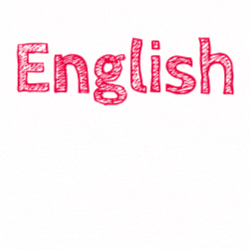

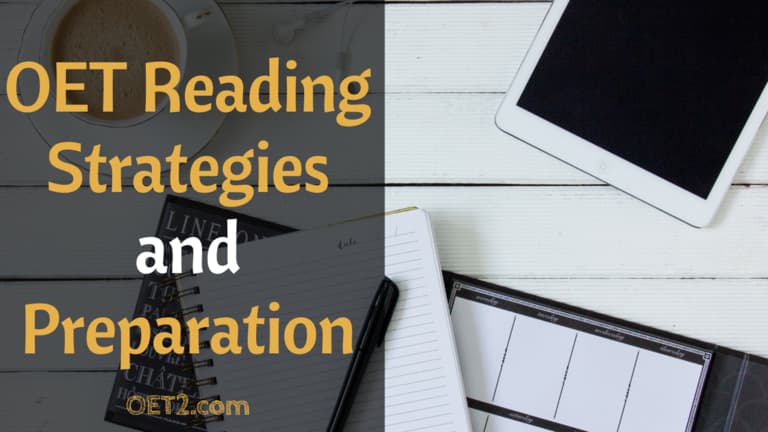

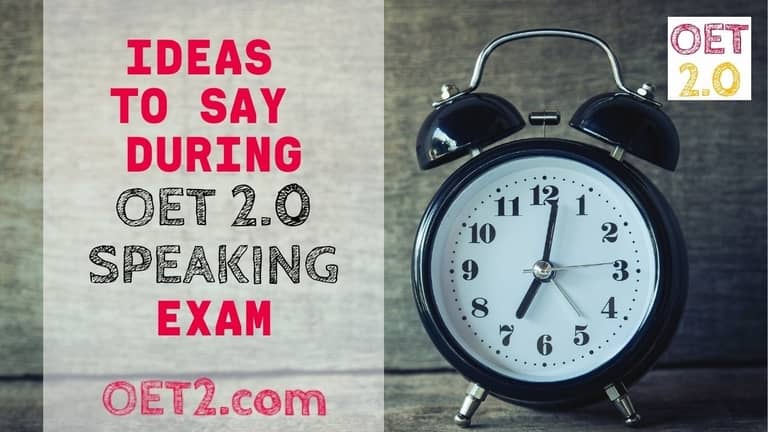
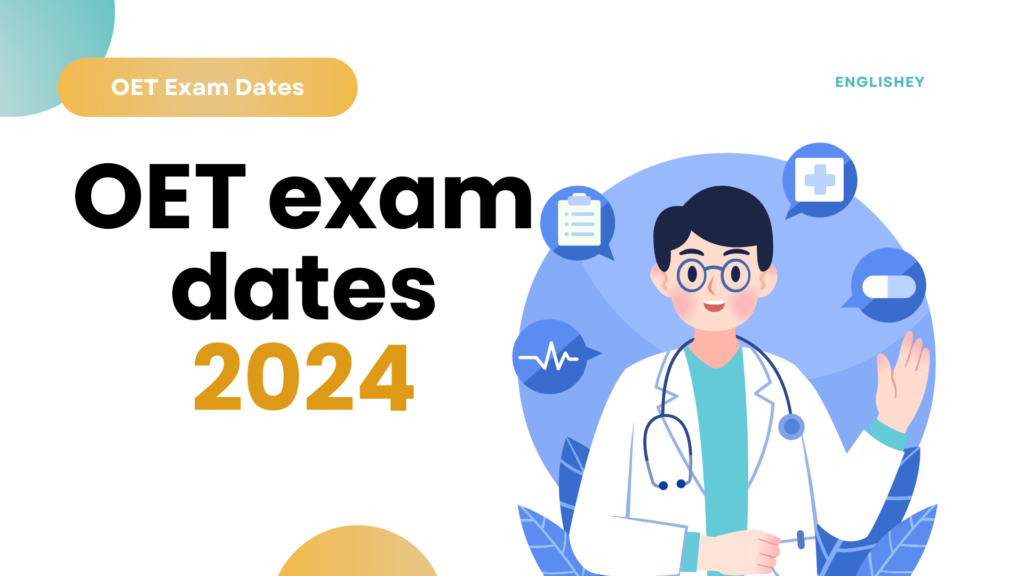
Responses